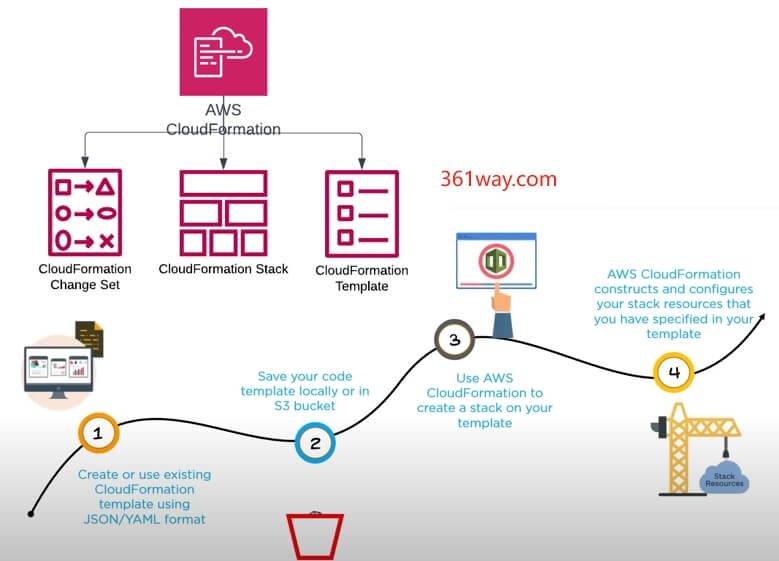CloudFormation solution Steps
What are the steps involved in a CloudFormation solution?

AWS CloudFormation is an infrastructure as code (IaC) service offered by Amazon Web Services. It allows you to automate the provisioning and management of your AWS resources in a safe and repeatable way.
- Create or use an existing CloudFormation template using JSON or YAML format.
- Save the code in an S3 bucket, which serves as a repository for the code.
- Use AWS CloudFormationto call the bucket and create a stack on your template.
- CloudFormation reads the file and understands the services that are called, their order, the relationship between the services, and provisions the services one after the other.
AWS CloudFormation Documentation
Breakdown of the typical steps
A CloudFormation solution involves managing your infrastructure through templates and automation. Here's a breakdown of the typical steps:
-
Define your Infrastructure: This involves deciding what resources you need for your application. This could include Amazon EC2 instances, S3 buckets, security groups, databases, and more.
-
Write a CloudFormation Template: CloudFormation uses templates written in JSON or YAML format to define the resources and how they should be configured. The template specifies properties like instance type, security group settings, and IAM roles.
-
Store the Template (Optional): While you can directly use the template for creating the stack, it's a good practice to store it in an S3 bucket for version control and easier management.
-
Create a CloudFormation Stack: The stack is the actual deployment of your infrastructure based on the template. You can use the AWS Management Console, AWS CLI, or SDKs to create the stack.
-
Validate and Test (Optional): Tools like AWS CloudFormation Linter can help identify syntax errors and potential issues in your template before deployment. You can also use Change Sets for a preview of what the stack creation or update will do.
-
Monitor Stack Creation: CloudFormation provides logs and status updates while creating the stack. This helps you identify any errors or unexpected behavior during the deployment process.
-
Manage your Stack: Once created, you can use CloudFormation to manage your stack's lifecycle. This includes actions like updating the stack with changes to the template, deleting resources no longer needed, or exporting outputs from the stack.
-
(Optional) Teardown: If you no longer need the infrastructure, you can easily delete the entire CloudFormation stack, removing all the associated resources.
捐赠本站(Donate)

如您感觉文章有用,可扫码捐赠本站!(If the article useful, you can scan the QR code to donate))